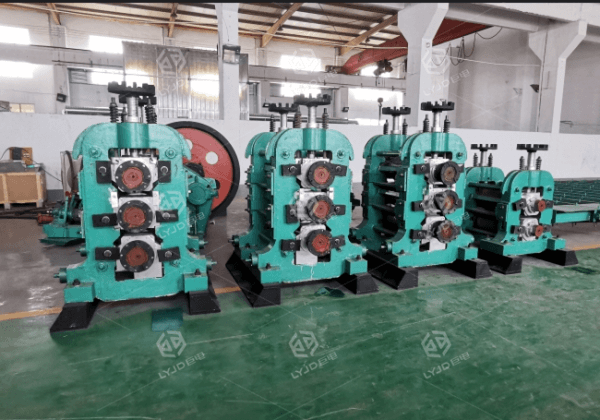Hot rolling mill is exposed to high temperatures, large volumes of cooling water and high impact forces on a daily basis. They are also subjected to ever-increasing production requirements and the challenge of maintaining or even improving the quality of the finished product. In the high-intensity working environment, the service life of the hot rolling mill is under great test. So, how can we prolong the service life of the hot rolling mill?
Before discussing how to prolong the service life of hot rolling mills, let's discuss the process flow of hot rolled steel bars.
Hot-rolled steel bars are finished steel bars that have been hot-rolled and naturally cooled. They are made of low-carbon steel and ordinary alloy steel at high temperatures. They are mainly used for reinforcement of reinforced concrete and prestressed concrete structures. They are used in civil engineering One of the most widely used steel varieties.
The production process of hot-rolled steel bars generally includes: Melting of scrap steel—Casting billet by continuous casting machine—Billet secondary heating—Rough rolling of billet mill—Finish rolling of continuous rolling mill—Flying shear—Cooling bed—Packing.
Generally, steel bars with a diameter of 6.5 to 9 mm are mostly rolled into coils; those with a diameter of 10 to 40 mm are generally straight bars with a length of 6 to 12 meters.

The raw material here has two meanings. One refers to the composition of the billet: the billet with different components determines its own hardness, which in turn affects the required rolling force. The greater the rolling force required, the greater the wear on the rolling mill during rolling; the second refers to the material of the hot rolling mill roll: the rolls of different materials have different hardness, and the loss during friction is different. There is bound to be a big difference in service life.
We know that below the melting point, the higher the temperature, the lower the hardness of the metal, and the smaller the rolling force required for rolling by the rolling mill. In the production process, the loss to the rolling mill is smaller and the service life of the rolling mill is longer. . Therefore, before the billet enters the rolling mill, we will heat the billet coming out of the casting machine through a heating furnace. However, when entering the rolling mill, the temperature of the billet is not as high as possible. If the temperature of the billets is too high, the grains of the produced products will be coarse. It will affect the performance of the products. Therefore, before entering the rolling mill, the billet is generally heated to around 1250°C.
The faster the rolling speed is, the greater the number of billets passes through the rolling mill per unit time, and the greater the loss of the rolling mill is per unit time. Moreover, if the rolling speed is too fast, the rolling force of the rolling mill will be significantly increased, resulting in the difficulty of the rolled piece being bitten into the roll, affecting the width and other adverse effects, which will not only increase the friction loss of the roll, shorten the service life of the rolling mill, but also affect the final Product performance.
If the rolling speed is too slow, the temperature drop of the rolled piece will increase. The hardness of the billet at different positions is quite different when it enters the rolling mill, which leads to serious uneven stress on the rolls of the rolling mill in a short period of time. The force load increases during the rolling process, which will also increase the friction loss of the rolling mill, and then affect the service life of the rolling mill.
The size of the finished product of the rolled product determines the size of the rolling force required during the rolling process, thus affecting the friction loss of the roll during the rolling process.
While minimizing the costs, Luoyang Judian can help you meet your requirements for increasing the capacity and quality. We also provide services for equipment monitoring, maintenance and production line system solutions to help you maximize quality, capacity and uptime.
Please send us your request and we reply to you with in 24 hours.
Submit Request